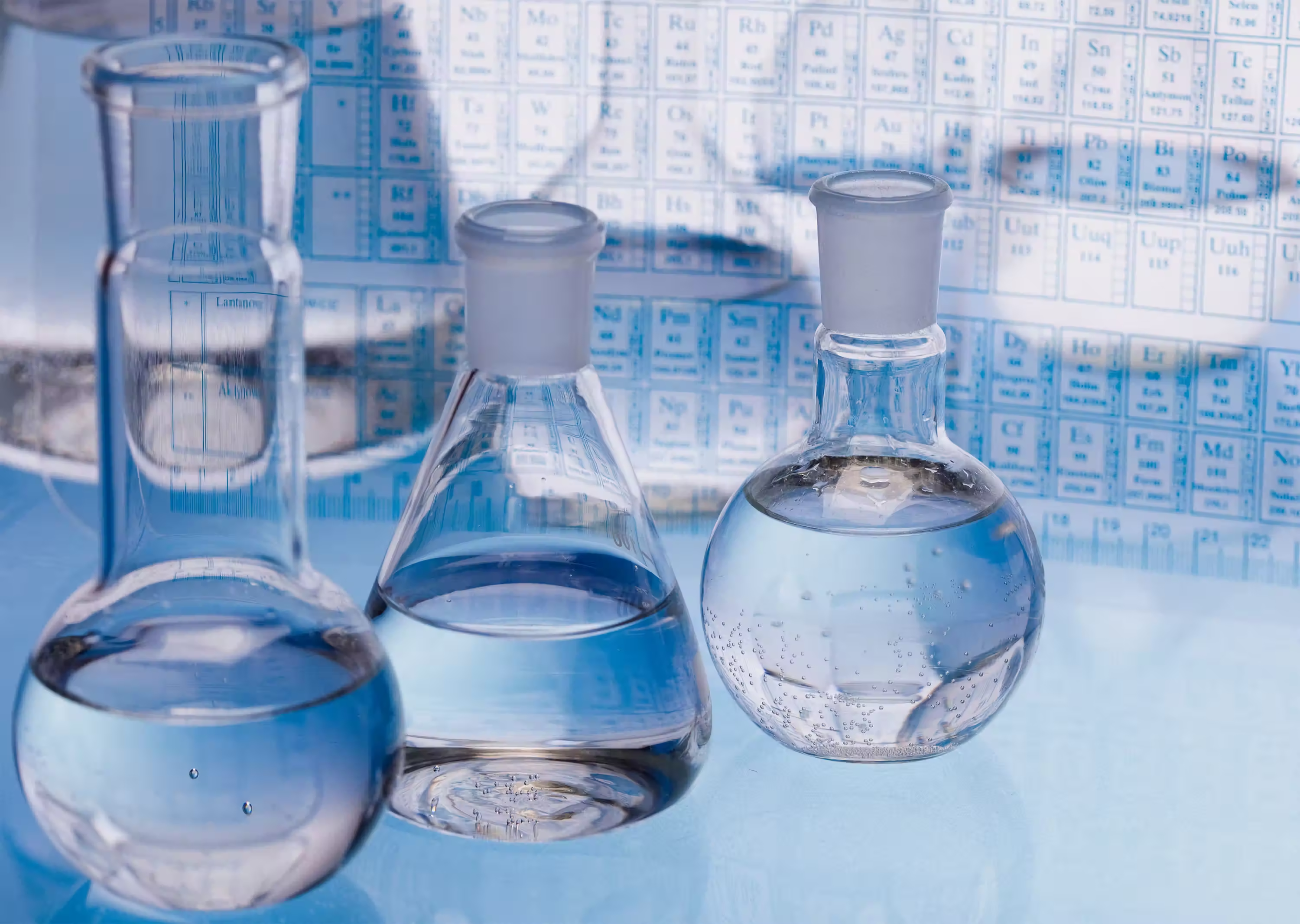Managing chemical hazards in Healthcare: Best practices for hospitals, labs and aged care
%20(1).jpg)
Healthcare poses a unique challenge for chemical safety management. Unlike industrial chemical facilities, healthcare environments involve a high diversity of chemicals being used in small quantities acrossdepartments, creating decentralised risk profiles.
The healthcare sector relies heavily on chemical agents for sanitation, sterilization, diagnostics and therapeutic procedures. Every bottle, vial, and canister in a hospital or lab is not just a functional tool, but a potential hazard to people, patients and the environment if not managed correctly.
This article outlines best practices for managing chemical hazards across hospitals, diagnostic laboratories and other healthcare settings, focusing on risk assessment, control measures, regulatory alignment and culture of safety.
Healthcare chemical environments
Categories of chemicals in use in healthcare facilities include:
- Disinfectants and Cleaning agents
- Sterilants and Anaesthetic Gases
- Laboratory Chemicals
- Pharmaceutical and Cytotoxic Drugs,
Each category poses distinct risks, such as toxicity, carcinogenicity, flammability or reactivity, necessitating tailored management strategies.
Chemical hazard management in healthcare is governed by multiple overlapping regulations and standards. Aligning your strategies with these international, national, state and local frameworks ensures both compliance and documentation for audits and inspections.
Chemical Inventories
Management strategies begin with a comprehensive and accurate Chemical Inventory.
Inventory improves safety and is essential for regulatory compliance.
- Every department (whether pharmacy, pathology or facilities) should maintain current records of all chemicals, quantities and storage locations.
- Assign a chemical steward in each department to maintain inventory accuracy and ownership to ensure accountability.
- Regularly review and update SDS, such as with an automated solution.
- Chemical management software and streamline inventory processes with barcode or RFID integration linking directly to SDS and GHS hazard classifications.
Digital systems for chemical inventory management and SDS access improve data integrity and compliance. They provide best practice for real-time visibility and compliance with regulatory frameworks.
Risk Assessments
Healthcare professionals need to be aware of the hazards of all the chemicals they handle. Risk evaluations should consider:
- Inherent hazard using global standards such as GHS classifications
- Exposure potential according to frequency, quantity and route.
- The population at risk, such as medical staff, patients, maintenance teams, pregnant or immunocompromised staff and patients.
Control Measures
Once hazards are identified, control measures can be prioritized and tracked through the facilities environmental health and safety (EHS) system.
Apply the hierarchy of controls:
- Eliminate or substitute by using safer alternatives wherever feasible
- Regularly maintainer Engineering controls such as fume hoods, biosafety cabinets, or anaesthetic gas scavenging systems.
- Administrative controls such as Standard Operating Procedures (SOPs) governing chemical procurement, storage, handling, spill response, waste-handling and disposal. Clear signage and implementing exposure monitoring programs.
- Provide PPE such as gloves, goggles, respirators and gowns suitable for the chemical hazards present and aligning with SDS recommendations. PPE should be the last line of defence, not the first.
Training and Competence
In healthcare, where chemical exposure risks cross departments, competency-based training is essential. Effective chemical safety training requires competence in interpreting hazard labels, handling spills, and managing waste streams.
Training should include:
- Reading and interpreting SDS and GHS labels.
- Proper use and storage of disinfectants, sterilants, and cytotoxic agents.
- Spill response procedures and emergency actions.
- Waste segregation and disposal requirements.
- Use short, real-world scenario-based modules to make training practical and memorable. “What would you do if a formalin spill occurred in histology.
Competency-based refresher training and scenario based-drills reinforce retention and safety culture.
Emergency Preparedness and Spill Response
Spills happen. However, unplanned doesn’t have to meanunprepared. Prompt, well-coordinated responses to chemical incidents arecritical in patient care areas.
Every healthcare facility should have:
- Clearly marked and accessible spill response kits specific to the relevant chemicals.
- Emergency eyewash stations.
- Designated and trained emergency response personnel
- Established communication channels with local emergency services
Chemical incidents should be integrated into the broader hospital/healthcare facility’s broader incident command system (HICS) so responses are coordinated, documented and reviewed for improvement.
Conduct regular spill drills and post-incident reviews to improve response times, identify gaps, update procedures, and mitigate recurrence.
Waste Management and Sustainability
Hazardous chemical waste management is a regulatory and reputational priority.
Hazardous, pharmaceutical and biohazard waste streams should be clearly segregated, and all containers should be properly labelled and compatible with their contents.
Modern healthcare sustainability programs increasingly integrate green chemistry principles:
- Substituting hazardous substances with safer alternatives
- Segregating hazardous, infectious and pharmaceutical wastes.
- Implementing take-back programs for unused pharmaceuticals or expired chemicals.
- Centralising chemical purchasing to prevent overstocking and expiry.
- Monitoring air and water emissions for compliance and environmental impact.
These initiatives not only reduce regulatory risk but also support broader ESG and corporate responsibility goals.
Fostering a Chemical Safety Culture
Controls and policies are only as effective as the culture that supports them.
Establishing a robust safety culture requires:
- Leadership engagement,
- Transparent reporting systems
- Incorporating safety metrics into performance reviews
- Adopting continuous improvement models such as Plan-do-check-act (PCDA) to foster learning and resilience.
- Regular audits, encouragement of near miss reporting, and recognition of safe practices recognition of safe practices help embed chemical safety as a shared value.
- Recognise teams that demonstrate good chemical stewardship.
A mature chemical safety culture is proactive not reactive. It learns, adapts, and improves continuously. Small incentives can drive lasting behavioural change.
Conclusion
Effective chemical hazard management in healthcare requires an integrated approach, combining rigorous hazard identification, robust controls, compliance alignment, and an empowered workforce. Opportunity lies in not only preventing harm but also in driving innovation toward safer, more sustainable healthcare operations.
Ready to strengthen your chemical safety and compliance? Book a demo to learn more.
.png)


